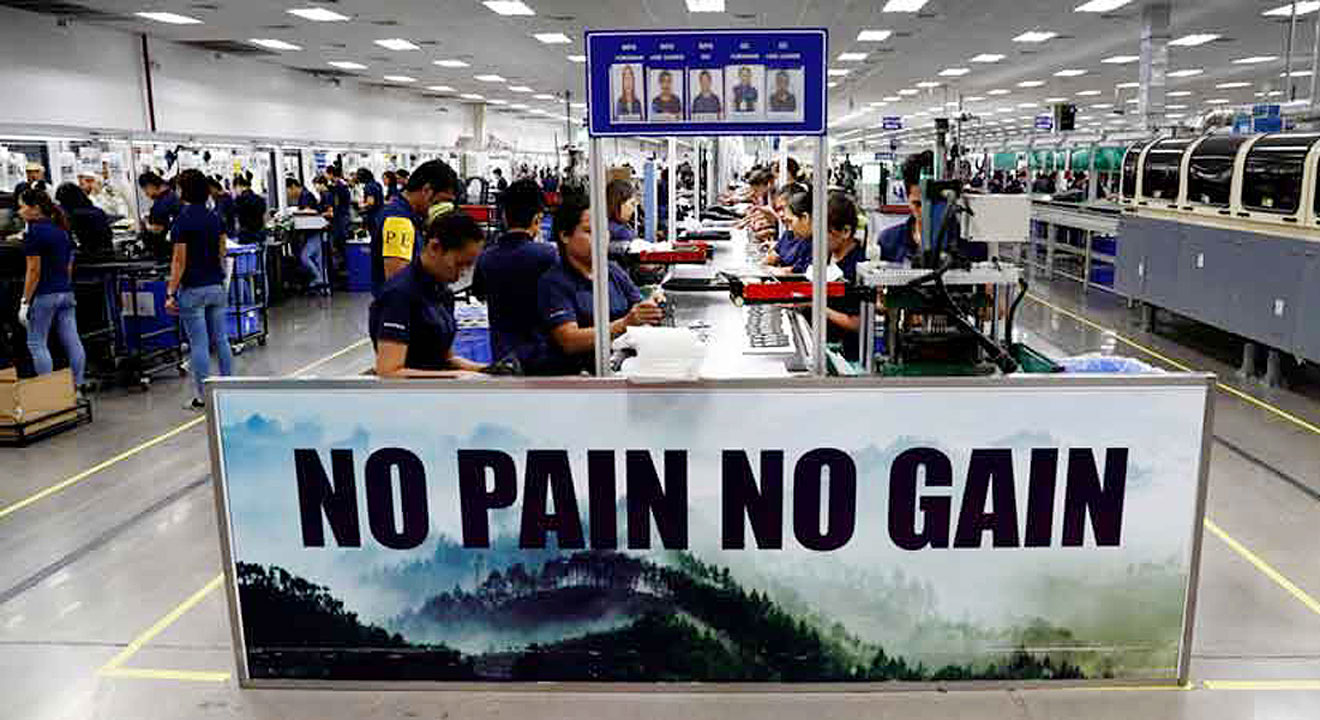Resilient demand, lower costs drive PHL factory output growth in May

By Bernadette Therese M. Gadon, Researcher
Factory output in May grew by 8.1% compared to the previous year, thanks to lower costs and resilient domestic demand despite weaker global demand.
Factory output, measured by the volume of production index (VoPI), showed faster growth in May compared to the revised 7.7% growth in April, according to the preliminary results of the Monthly Integrated Survey of Selected Industries (MISSI). It also marked a reversal from the 0.6% decline in the same month last year.
Looking at the monthly figures, the manufacturing sector’s VoPI increased by 6.8% in May, recovering from a 9.7% contraction in the previous month. However, after accounting for seasonal factors, VoPI decreased by 0.9% compared to the 2.9% growth seen in April.
Year to date, factory output has averaged 7%, which is slower compared to the 35.8% growth seen in the January-to-May 2022 period.
Analysts attributed the higher factory output to lower costs of materials and improvements in global supply chains.
Cid L. Terosa, senior economist at the University of Asia and the Pacific (UA&P), said in an email that the easing of inflationary pressures has improved purchasing power and employment conditions, resulting in better market consumption capacity compared to last year.
Additionally, improving market conditions have led to increased demand and boosted the production of food products, beverages, and industrial equipment and inputs, according to Mr. Terosa.
According to the statistics agency, the higher growth recorded this month can be attributed to the upturn in electrical equipment, which saw a growth of 53.7% in May compared to 19.2% in the previous month, and a significant turnaround from the 51% decline observed a year ago.
On the other hand, the growth of food products slowed to 11.6% in May from 16.2% in April, but it was still faster than the 0.4% growth recorded a year ago. Similarly, beverages grew by 3.9% compared to a decline of 0.5% the previous month, but it was slower than the 5.3% growth seen a year ago.
In a Viber phone call interview, George T. Barcelon, the president of the Philippine Chamber of Commerce and Industry (PCCI), explained that the annual growth in the food sector was driven by the harvest season and consistent demand in May.
There was also a slower decline observed in chemical and chemical products (-21.2% in May compared to -32.2% in April), wearing apparel (-25.5% compared to -33.9%), and machinery and equipment except electrical (-14.1% compared to -2%).
“However, underlying demand conditions, especially in foreign markets, remain weak,” said Domini S. Velasquez, chief economist of China Banking Corp., in a Viber message, explaining the dip in the manufacturing sector’s monthly seasonally adjusted data.
“If you look at manufacturing PMIs globally, many countries are posting contractions in manufacturing PMIs,” added Ms. Velasquez.
IHS Markit’s Philippines Manufacturing Purchasing Managers’ index (PMI) expanded to 52.2 in May from 51.4 in April. A reading above 50 marks an improvement for the manufacturing sector, while anything below indicates deterioration.
However, manufacturing in major economies such as Europe and the United States continued to contract last May due to the high-interest rate environment.
Latest PMI figures for June showed that, out of seven ASEAN countries, four posted slower expansion, including the Philippines.
The capacity utilization rate dropped to an average of 67.3% in May from the revised 79.3% in April. Out of 22 sectors, only basic pharmaceutical products and pharmaceutical preparations did not have an average capacity utilization rate of at least 50%, registering 44.4% in May compared to 61.1% in April.
The PSA reported last Wednesday that the inflation rate slowed for the fifth straight month due to lower prices of food and transport, which led to higher domestic demand, keeping manufacturing afloat in May.
Mr. Barcelon expects that sectors related to transport and school supplies will pick up in the next months as traveling increases during the break and schools reopen in July.
Ms. Velasquez from China Bank expects manufacturing to remain subdued in the coming months due to softer global demand for semiconductors.
“Indicators in major importing countries point to weaker manufacturing sectors across regions as consumers shift their demand from goods to services in the post-pandemic period,” she said.
However, Mr. Terosa of the UA&P said that an uptrend can be sustained throughout the year, considering that the sector’s performance this year is relatively better than last year.
“To prevent demand from declining, industries should be mindful of maintaining consumer and producer demand growth through stable pricing and a favorable business environment,” he said.
He also stressed the importance of greater and improved resilience in the face of global and domestic supply chain disruptions, upskilling workers, innovation in the sector, monitoring evolving reforms that may impact supply and demand conditions, and staying updated with changes in both consumer and producer markets. — With Reuters



